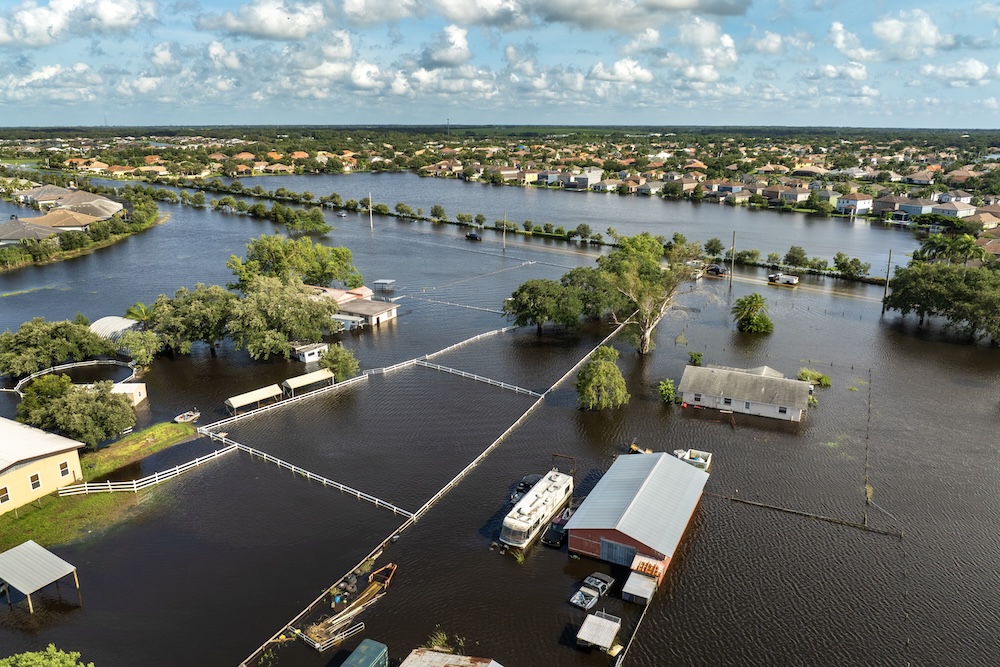From hurricanes and floods to wildfires and heatwaves, climate change has turned what were once “rare events” into annual realities. As the cost of climate-driven disasters climbs, insurance has become both a lifeline and a pressure point. For homeowners, renters, and communities, understanding climate risk and how insurance fits into resilience planning is no longer optional — it’s essential.
The Rising Cost of Climate Disasters
In the U.S. alone, 2023 saw 28 separate billion-dollar weather and climate disasters, the highest on record (NOAA). Globally, the financial toll of extreme weather is estimated at over $300 billion per year — and rising.
For insurers, this means skyrocketing claims. For consumers, it often means rising premiums, limited coverage, or even losing access to insurance altogether. In places like Florida and California, major insurers have pulled back from offering home insurance due to repeated losses from hurricanes and wildfires.
The message is clear: the climate crisis isn’t just environmental — it’s financial, and the insurance market is already shifting.
What Is Climate-Resilient Insurance?
Climate-resilient insurance is not just about paying out after a disaster. It’s about anticipating climate risk, incentivizing resilience, and protecting long-term stability. Key aspects include:
- Coverage for extreme events: Ensuring homes and businesses are protected against floods, wildfires, hurricanes, and heat-related damages.
- Resilience incentives: Premium discounts or policy benefits for homes with resilience upgrades — such as fire-resistant roofing, flood barriers, or storm shutters.
- Community-level protection: Pooling resources to insure vulnerable populations and spread risk fairly.
- Sustainable rebuilding: Encouraging repairs and reconstructions that are energy-efficient, low-carbon, and disaster-resistant.
Why Traditional Insurance Models Are Struggling
Conventional insurance was designed around the assumption that risks were random and rare. Climate change has upended that logic. Risks are now predictable, escalating, and systemic.
- Higher frequency: Wildfires, floods, and storms are happening more often.
- Higher severity: Events are more destructive when they hit.
- Geographic spread: Places previously considered “low risk” are now facing new threats (e.g., flooding in areas never mapped as flood zones).
These shifts leave insurers with two options: raise premiums drastically or withdraw coverage. Neither solution addresses the underlying problem: we are insuring against a system in breakdown.
How Homeowners Can Build Climate Resilience
Insurance alone cannot shield people from climate risk. It must be paired with resilience planning:
- Retrofit homes: Elevate structures in flood-prone areas, reinforce roofing against storms, add fire-resistant landscaping in wildfire zones.
- Invest in passive cooling: Shade trees, reflective roofing, and natural ventilation reduce reliance on air conditioning during heatwaves.
- Backup power: Solar panels with battery storage can protect against blackouts during disasters.
- Maintain defensible space: For wildfire-prone areas, clear vegetation close to homes and use non-flammable materials.
The best insurance policies are those that reward these steps, reducing both premiums and vulnerability.
Social and Equity Considerations
Climate risk does not affect everyone equally. Low-income households are often:
- More likely to live in high-risk areas (due to affordability).
- Less able to pay rising premiums.
- Less able to recover after disaster, even with insurance payouts.
Without deliberate policies, climate insurance risks deepening inequality. Solutions must include subsidies, public-private insurance partnerships, and community-based models to ensure protection is not a privilege but a right.
The Bigger Picture: Insurance as Climate Policy
Insurance may feel like a private, financial product, but it plays a massive role in shaping climate outcomes. When insurers refuse to cover poorly designed or high-risk projects, they send a powerful signal to markets and governments: resilience matters.
At the same time, if insurance companies only retreat, communities are left exposed. This is why regulators, NGOs, and climate advocates are calling for:
- Mandatory climate-risk disclosures for insurers.
- Green rebuilding requirements tied to payouts.
- Public insurance pools for areas where private insurers refuse to operate.
- Integration of climate science into every underwriting decision.
Insurance isn’t just a safety net — it’s leverage to accelerate adaptation.
FAQs
Why are insurance premiums rising so fast?
Because climate disasters are more frequent and severe, insurers face higher payouts. To stay solvent, they raise premiums or limit coverage.
Is climate-resilient home insurance available now?
Yes, but it depends on where you live. Some insurers offer resilience incentives (e.g., discounts for hurricane shutters or fire-resistant materials). Availability is expanding but uneven.
What happens if no insurer will cover my home?
Some states offer “last resort” insurance pools (like California’s FAIR Plan), but these often come with high costs and limited coverage. Advocates are pushing for stronger public-private insurance partnerships.
Is insurance enough to protect me from climate risk?
No. Insurance is financial recovery after disaster, but it doesn’t prevent damage. Pair coverage with resilience measures: retrofits, fire-resistant landscaping, flood protection, etc.
How does climate insurance connect to sustainability?
By incentivizing durable, resilient, and low-carbon homes, insurance can shift markets toward sustainable construction and rebuilding. Done right, it discourages throwaway building practices and rewards long-term resilience.
Final Thoughts
As climate change reshapes the risks we face, insurance is caught at the crossroads of finance, environment, and equity. It is no longer enough to insure against yesterday’s disasters; we must prepare for tomorrow’s.
Insurance can either reinforce vulnerability or accelerate resilience. The choice is ours — and the systems we build now will determine whether protection remains accessible, equitable, and sustainable in the decades ahead.









Reader Interactions